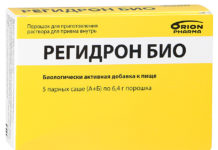Chestnut trees stand out against the background of others with a lush, spreading crown, the picturesqueness of which is emphasized by hundreds of carved leaves. The fruits of some varieties of the tree are used for food or become a source of valuable substances for health. However, The benefits and harms of chestnuts depend not only on their species, but also on how much of the plants will be used for medicinal purposes.
Material Content:
Useful and healing properties of horse chestnut
The most famous and demanded on the European continent are two types of chestnut - horse and sowing (noble).
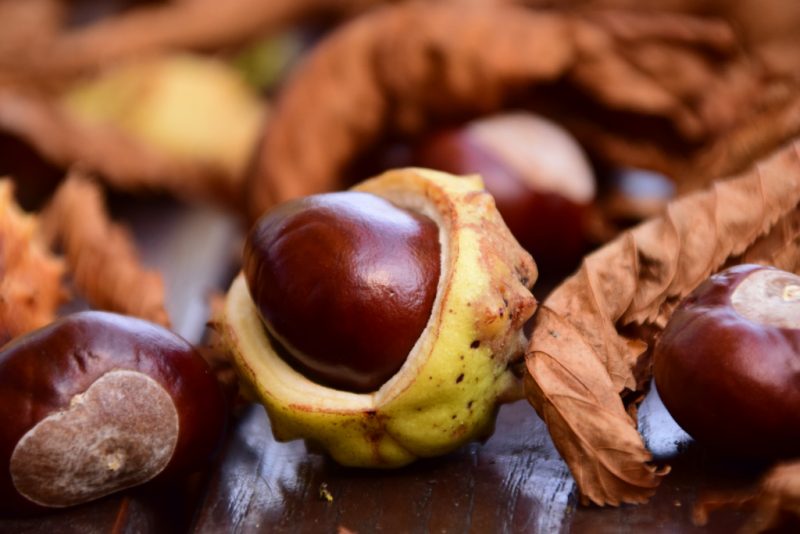
Horse chestnut grows almost throughout Russia and is well known to most of its inhabitants. In spring, horse chestnut is covered with numerous flowers - delicate pink and white inflorescences in the form of candles. And in autumn, the soil under the tree is covered with its fruits - round, shiny brown. And although they are inedible, they have great healing power.
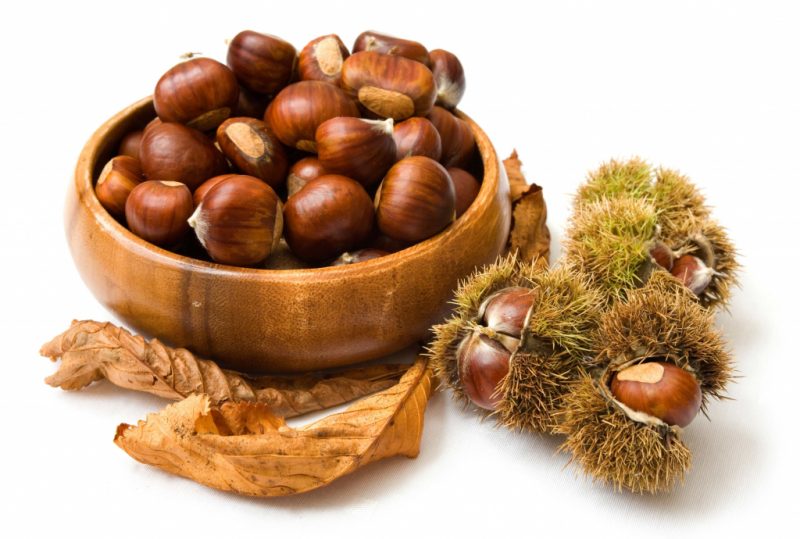
Noble chestnut loves a mild subtropical climate, therefore it is found in the southern latitudes. An adult sowing chestnut tree looks no less picturesque than a horse crown. And most importantly, its fruits - nuts are edible and differ in pronounced pleasant taste.
However, according to its healing properties, seed chestnut is inferior to horse chestnut.
Chemical composition
The official medicine recognized the healing properties of all parts of horse chestnut - flowers, fruits, leaves and even bark, and are used for the manufacture of medicines.

The particular value of the plant lies in its composition:
- in fruits and cortex: phylloquinone, sugars, fatty oils, as well as the active compounds of the glycoside group of saponins (10%) - esculin and escin, which reduce blood viscosity, have an antithrombotic effect, lower capillary permeability;
- in fruits: flavonoids of the glycoside group - quercetrin, isocvercitrin, quercetin and kempferol, fraksin, fatty oils, starch, proteins;
- in fruits: B, C vitamins, trace elements - iron, potassium, zinc, magnesium, phosphorus, calcium, tannins;
- in the leaves - vitamin K, carotenoids, pectins, as well as rutin, selenium, spireoside, astragaline, starch. It is characteristic that the biochemical composition of the leaves does not change during the warm season;
- in the flowers - rutin, flavonoids, mucus, pectins.
The healing potential of the substances that make up horse chestnut determine its pharmacological properties. Their use is not only appropriate, but also necessary in the treatment of most pathologies of the circulatory system.
Benefits for men and women
When using the healing properties of chestnut in the preparation of medicines and drugs, you can get rid of many diseases against which traditional medicines are powerless.
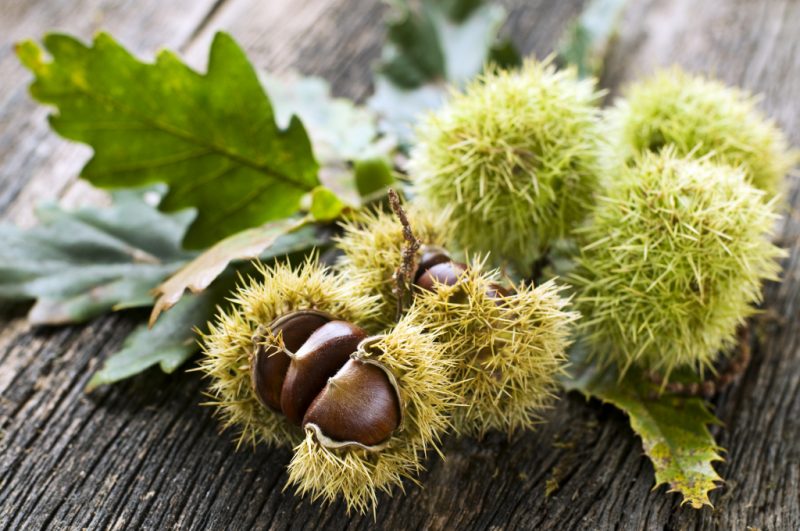
The healing properties of the plant are due to the action of biologically active substances:
- tannins have a disinfecting effect, relieve inflammation and stimulate blood circulation;
- saponins regulate the water-salt balance, promote the synthesis of hormones, prevent the development of atherosclerosis of blood vessels and strengthen the venous walls;
- rutin increases the elasticity of blood vessels, normalizes blood pressure, takes part in the work of the adrenal glands, increases the functionality of the gallbladder;
- carotenoids support the functionality of the cardiovascular system, normalize cholesterol;
- flavonoids increase the strength of the vascular walls, have a choleretic effect.
Due to the rich composition of fruits and bark, chestnut is indispensable in restoring men's health. Tinctures based on the plant are taken for prostate adenoma, decoctions from the crushed peel of the fruit help with a decrease in potency and sexual desire, and baths with the addition of chestnut decoction reduce inflammatory processes.

Women use horse chestnut products for:
- getting rid of cellulite;
- digestion improvement;
- eliminate puffiness;
- treatment of gynecological diseases caused by stagnation of blood in the pelvis;
- therapeutic effects in mastitis;
- the fight against varicose veins and thrombophlebitis;
- relief of uterine bleeding;
- cleansing the body of toxins.
The use of chestnut fruits is indicated for hemorrhoids, metabolic disorders in the body, arthritis, heart disease, bronchitis, rheumatism and radiculitis.
Since horse chestnut is considered inedible, taking medications based on it should be strictly dosed.
How to distinguish edible chestnut from inedible
To determine the suitability of chestnut for food, you should pay attention to the main differences between the sowing and horse species of the plant.
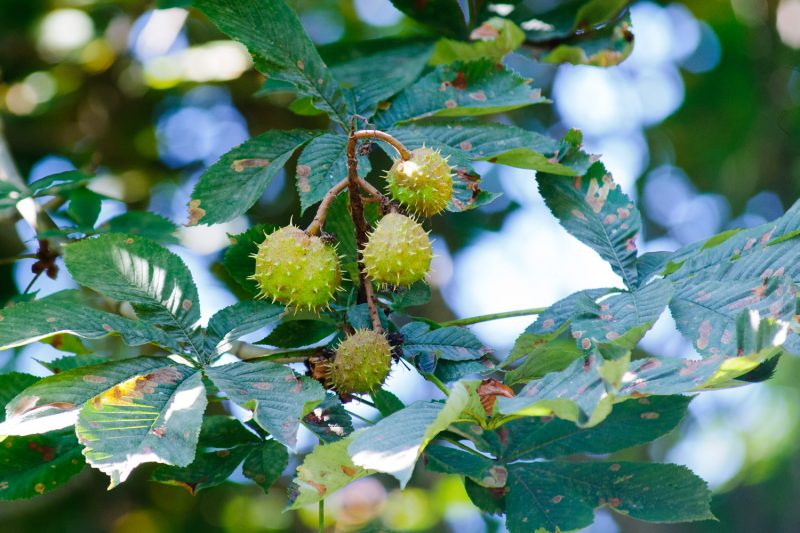
Sowing chestnut:
- leaves - oblong, lanceolate, serrated at the edges;
- spike inflorescences appear in June-July;
- the fruits are covered with leathery pericarp. One box contains three to four nuts. Ripen in October.
While horse chestnut leaves are large, consist of several segments. Inflorescences have a pyramidal shape and bloom in May. In the pericarp covered with thorns, as a rule, one nut.
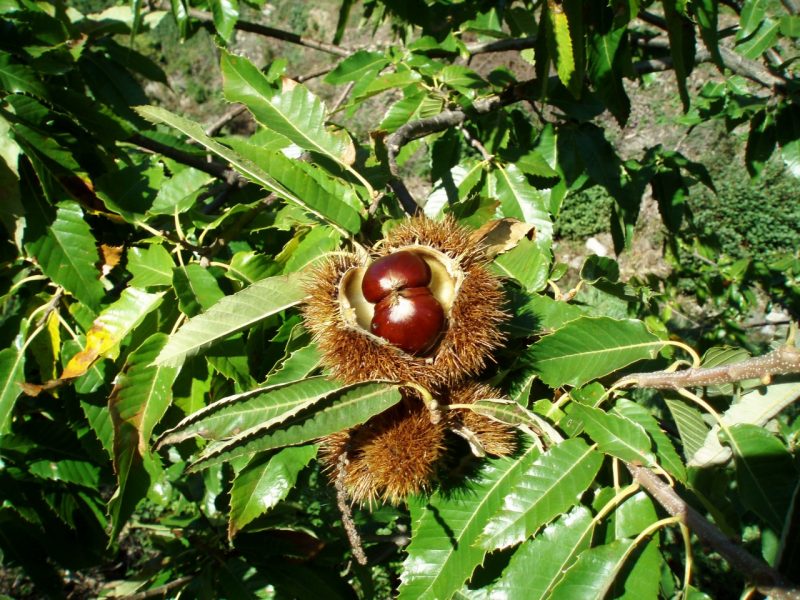
In addition, edible chestnuts are characterized by a sweet taste, while horse chestnut tastes bitter and astringent.
The use of chestnuts in traditional medicine
In folk medicine, bark, fruits, leaves and inflorescences of horse chestnut are used. Based on them, decoctions, tinctures and infusions, as well as ointments and powder are prepared.
Preparation and use of tincture.
For internal use. The brown peel is removed from ripened chestnut fruits and ground.For 50 g of raw materials take half a liter of vodka and insist for two weeks in a dark place.
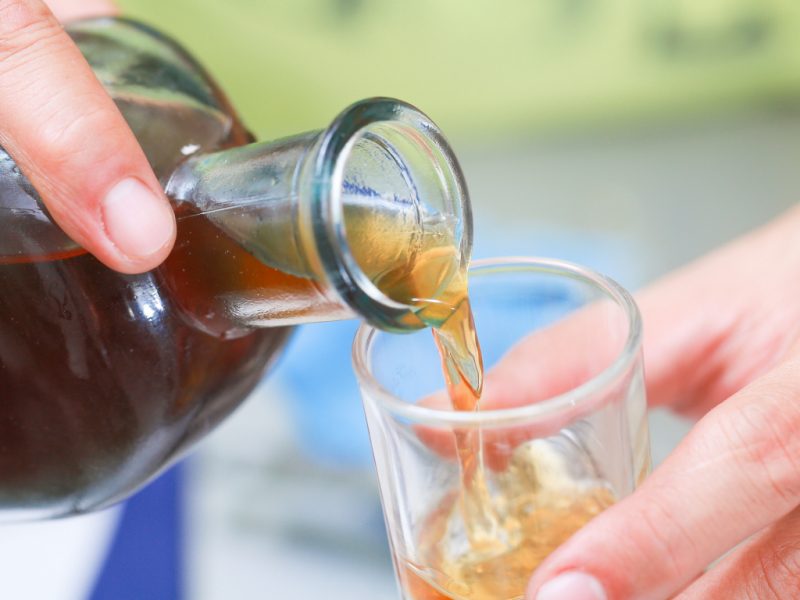
In the same way, prepare a tincture of chestnut inflorescences. To do this, you need 20 flowers and 500 ml of vodka.
Internally, tincture is taken for varicose veins, exacerbation of hemorrhoids, prostatitis and prostate adenoma.
Dosage - 10-30 drops three times a day before meals for a month.
For external use. Take 300 g of horse chestnut fruit, grind them in a meat grinder and pour vodka to a liter volume. Stand in the dark for two weeks.
Use:
- in the form of compresses for pain in joints, rheumatism, neuralgia, gout, purulent wounds, trophic ulcers, varicose veins and phlebitis;
- for douching with whitewash;
- for baths and enemas for hemorrhoids.
Horse chestnut tincture is often used as a painkiller - put a little money on a sore spot and rub it with light movements.
Preparation and use of decoctions, infusions and ointments
To prepare a decoction, you can use any part of the plant. For one tablespoon of raw materials, take a glass of water, bring to a boil and stand for an hour.
Take a decoction three times a day for a tablespoon for gastritis, hemorrhoids, chronic bronchitis, radiation sickness, fibrotic mastopathy, migraine, varicose veins, prostatitis, multiple sclerosis, pneumonia.
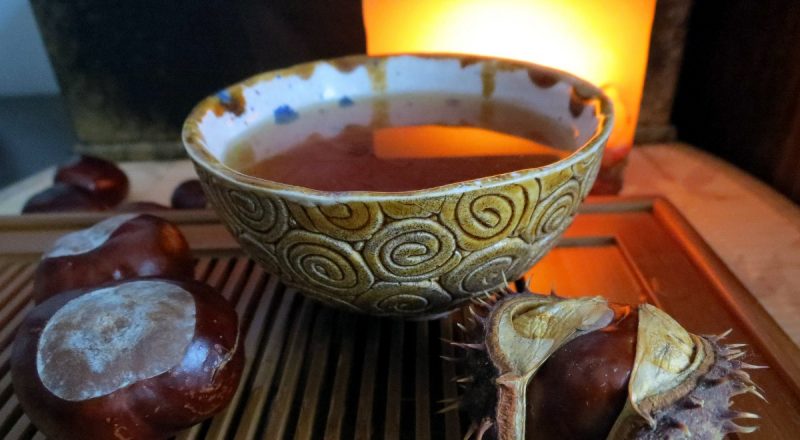
To prepare the infusion, you need 25 horse chestnut fruits, cut into halves. The prepared raw materials are placed in a gauze bag, the cargo is attached, lowered to the bottom of a three-liter jar and poured with boiled water.
The infusion period is two weeks. It is important that the bag with the cut fruit is always at the bottom of the can. The recommended daily dose for internal use is two glasses.
Accepted for pulmonary tuberculosis, high blood pressure, thromboembolism, gastritis, anemia.
For external use, the decoction is used as a painkiller, anti-inflammatory, venotonic and antithrombotic agent, added to water for bathtubs and baths, as well as for performing enemas and compresses.
To prepare the ointment, five horse chestnut fruits are ground, five tablespoons of vegetable oil are added and heated in a water bath for one hour. Applied as necessary to eliminate edema and pain with exacerbations of varicose veins and arthritis.
Use in cosmetology
The healing power of the components in the composition of the chestnut brings many benefits when applied for cosmetic purposes.

Horse chestnut extracts:
- eliminate puffiness of the skin;
- remove cellulite deposits;
- tone, soften and nourish dry skin;
- support antioxidant processes, preventing aging;
- protect from the harmful effects of ultraviolet radiation;
- stimulate collagen production, reducing wrinkles;
- prevent hair loss;
- contribute to the growth of hairline;
- prevent dandruff.
Therefore, horse chestnut extracts are widely used in the manufacture of creams, masks, shampoos, balms, lotions and serums.
And nutritionists recommend the use of chestnut-based products for anti-cellulite wraps.
How to Make Edible Chestnuts Deliciously
The true taste of edible chestnuts is revealed only if they are cooked correctly.
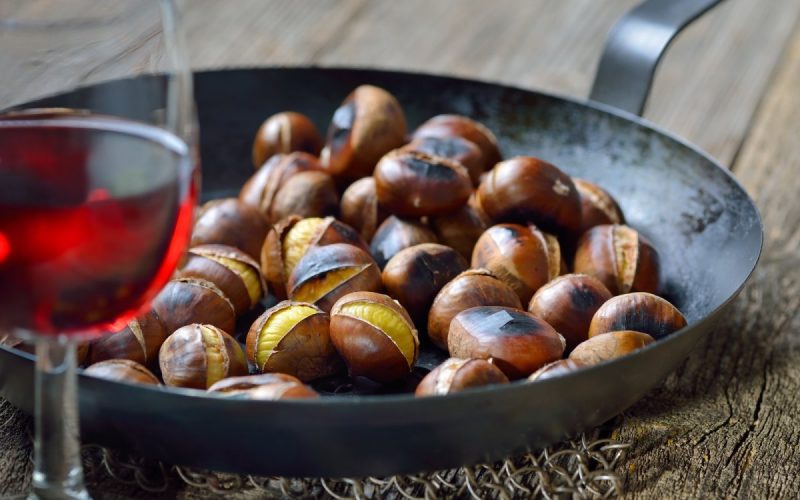
Culinary processing of fruits provides for the following sequence:
- wash the chestnuts and peel off the outer shell. If this is not done, the shell may explode during frying;
- prepared chestnuts are laid out in a pan and covered with wet wipes to prevent drying out. Teflon-coated cookware is not recommended;
- the total time for frying chestnuts is twenty minutes. In the process of preparation, the fruits must be constantly mixed and monitored to maintain the humidity of the napkins.
Noble chestnuts are considered finished if the cover covering them easily moves away from the surface of the fruit.
Eating horse chestnut nuts is strictly forbidden - a huge amount of tannic compounds contained in them can cause intoxication of the body.
Contraindications and possible harm
Despite the great healing potential, horse chestnut is indicated for use not by all groups of patients.
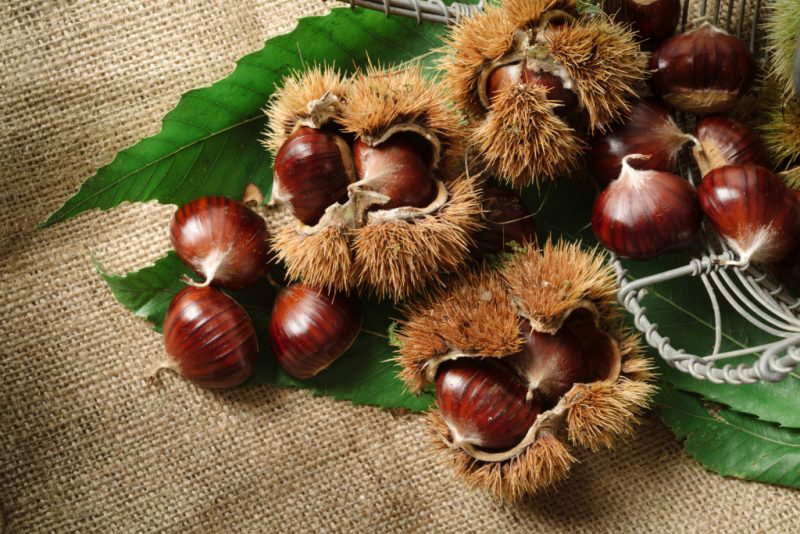
Therefore, before using plant-based products, it is necessary to take into account contraindications to its administration:
- pathology of the digestive tract;
- tendency to allergies;
- hypotension;
- menstrual irregularities;
- platelet deficiency in the blood;
- diabetes;
- kidney and liver failure;
- blood pathology;
- pregnancy and lactation.
Excessive amounts of edible chestnut in the diet lead to chronic constipation and flatulence. While eating under-cooked fruits can cause diarrhea.
A good therapeutic result is always the result of a reasonable approach to the use of medicines under the supervision of a competent specialist.







